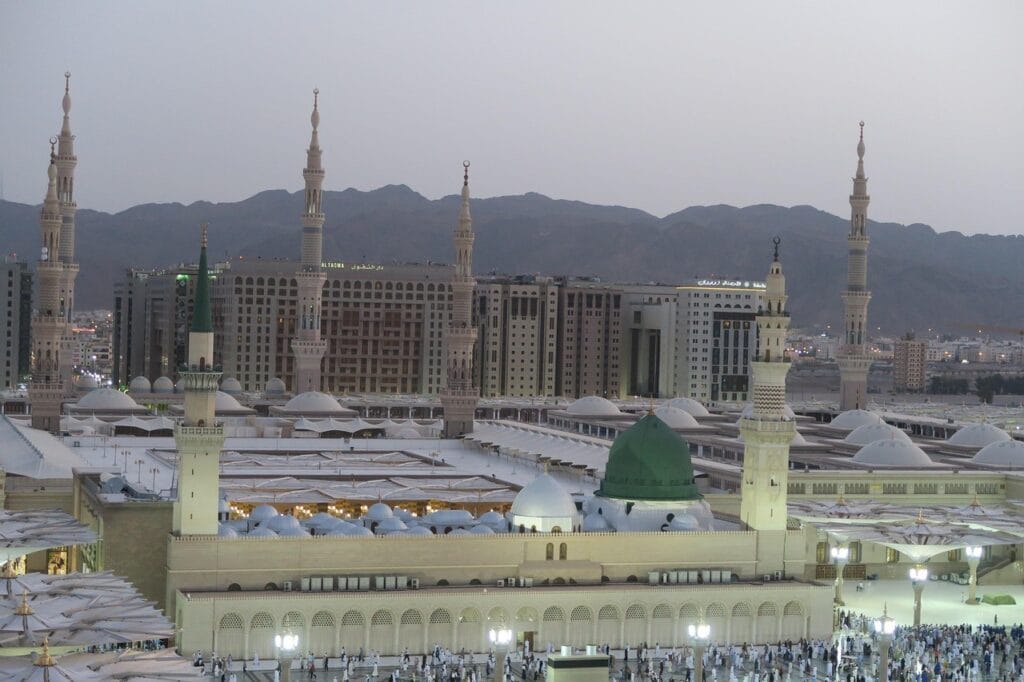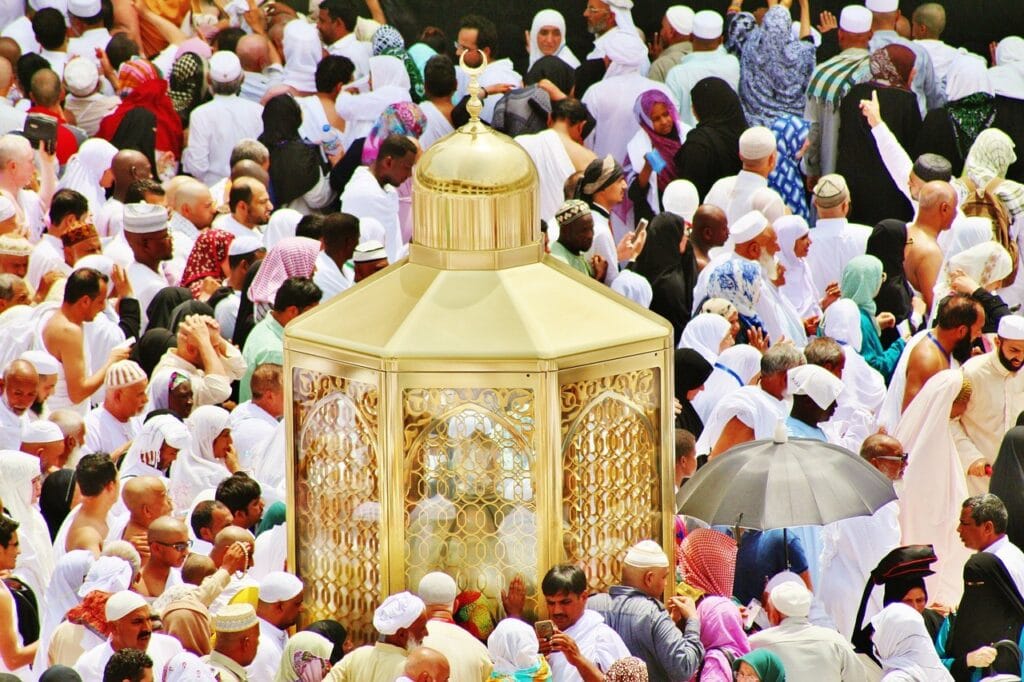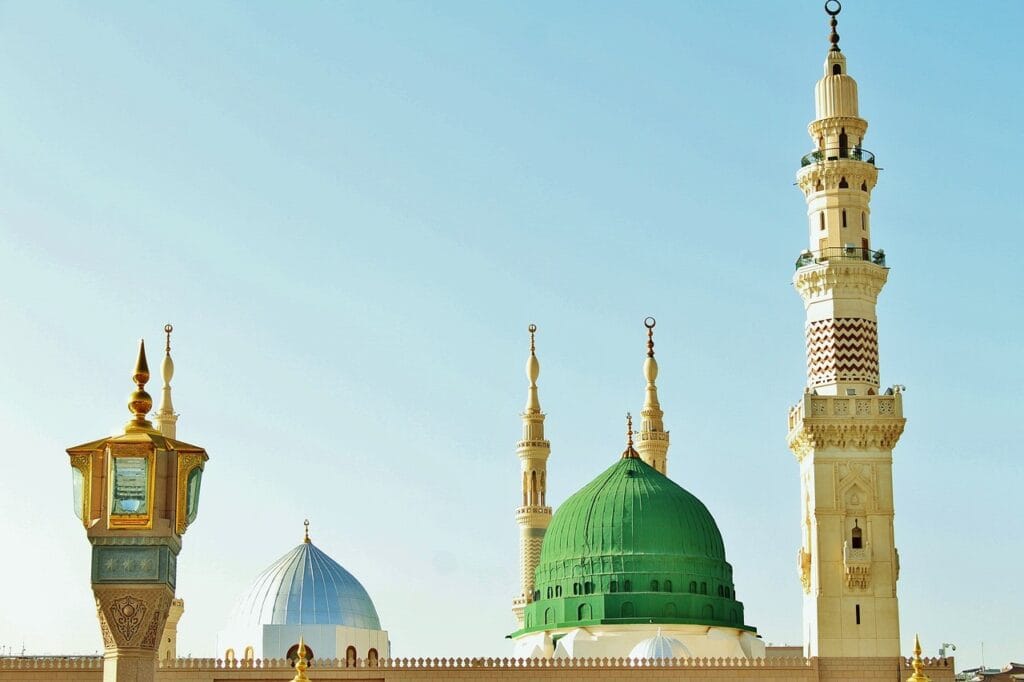
Makkah and Madinah are the Holy cities of Islam. Crores of Muslims come from around the globe, twenty-four hours a day, to perform the Hajj and Umrah. Islamic etiquette and respect for the sanctity of places should be considered while visiting such holy destinations.
Sadly, some pilgrims do not behave well toward rituals in sacred cities due to ignorance or laziness. Islam rewards a good attitude anywhere and anytime. But Makkah and Madinah are the cities where Muslim pilgrims must be humble.
Etiquettes for Visiting the Holy Cities of Mecca and Medina

The etiquette has to be about Islamic virtues for spiritual bounties in your Hajj. They are:
Dress in a Humble Way: According to Islamic tradition, pilgrims should dress modestly, cleanly, and humbly. Female and male pilgrims should never wear flowing dresses.
Be unobtrusive among crowds, especially in crowded areas like the Grand Mosque. Don’t push and intrude on other people.
Be respectful of Mosque Etiquette: Remove your shoes on arrival, don’t stuff your mouth during prayer, and be reverent about the sanctity of the atmosphere.
Find the best offers on Umrah Deals 2026 from Canada, and enjoy a hassle-free experience.
Practical Preparation
- Minimal packing is emphasized. But please do bring along all that you may need, such as comfortable attire, prayer essentials, a bottle to drink water from, and snacks.
- Hydrate and protect yourself from the sun. Bring sunscreen.
- Do observe local laws and treat the people and culture with respect.
Sacred Places in Makkah

Grand Mosque (Al-Masjid al-Haram)
The Grand Mosque lies in the centre of Makkah. It is Islam’s most sacred mosque and the location of the Kaaba and the Zamzam Well. And the Black Stone (Al-Hajar Al-Aswad).
When pilgrims arrive, they are emotionally touched by listening to prayer and seeing the Kaaba. Muslims praying in congregation touch them so emotionally.
The Kaaba
Kaaba is the house of Muslim prayer. Pilgrims on the Hajj and Umrah go around seven times for Tawaf, which symbolizes unity, submission, and surrender in front of Allah.
Zamzam Well
Zamzam Well at the Grand Mosque is a sacred location. Zamzam Well was before Hajra and Ismail, her son. Pilgrims carry Zamzam water with them and prefer to pour some of it as a gift for their friends and family.
Mount Arafat
Mount Arafat is a holy place outside Makkah. It’s from here that Prophet Muhammad (PBUH) presented the Farewell Sermon. Pilgrims go to it on the 9th of Dhul-Hijjah between sundown and noon for prayer and contemplation. It is the most sacred day of Hajj, and staying at Arafat would make Hajj illegal.
Mina
Mina is a valley some kilometres away from Makkah. During the Hajj season, it is a tent city. Pilgrims in Mina celebrate Ramy al-Jamarat, or stoning Satan, by the will of Allah through the Prophet Ibrahim (AS).
Muzdalifah
Muzdalifah is midway between Arafat and Mina. Pilgrims spend the night of the 9th Dhul-Hijjah there, waiting for the pebble collection for stoning. It is a very quiet, peaceful location where one can unwind a little before preparing for the remaining days.
The Journey After Hajj
Hajj is an individual experience. Pilgrims become sanctified by faith, and the sense of having been spiritually cleansed is subliminal. Hajj produces the good Islamic virtues of tolerance, thankfulness, humility, and ego sacrifice. Hajj is even referred to as rebirth to life since all the sins one has cleansed through Allah’s grace. Many recognized Umrah Travel Agencies facilitate the worshippers’ planning and arranging of the itinerary.
Etiquette for Visiting the Prophet’s Mosque in Madinah

The Prophet’s Mosque (Al-Masjid an-Nabawi) is the second-holiest in Islam. It’s not included in Hajj or Umrah practice, but spiritual enrichment is plentiful. If prioritising to visit there, the following etiquette must be followed:
Pure Intention (Niyyah)
Enter the mosque with the spirit of good intentions. The intention to enter there must be worship and love of Allah for his pleasure. Our Prophet (PBUH) taught us to do so: “Actions are but by intention.”
Entering the Mosque
Step forward with your right foot and recite the following supplication:
“Bismillah, was-salatu was-salamu ‘ala Rasoolillah”. (In the name of Allah, peace and blessings of Allah be on the Messenger of Allah)
Recite Tahiyyat Al-Masjid
Recite two rak’ahs of prayer as salam of the mosque upon arrival, except during an unlawful time to pray.
Proceed to Rawdah
Rawdah (before the Prophet’s grave and pulpit) is usually accustomed to being among the gardens of Paradise. It’s a green carpet and is full. Be nice, be polite, and do not shove people around.
Send Salutations to the Prophet
Recite Salutations for Peace by: “Assalamu ‘alaika ya Rasool Allah”. (Peace be upon you, O Messenger of Allah). Then, we warmly welcome Abu Bakr and Umar (RA), the Prophet’s friends.
Last Thoughts
It is an honour and a blessing to make a pilgrimage to Makkah and Madinah. To be polite to Islamic heritage is not to enhance your religious life. Be a polite person to the pilgrims and the sacred sites around you. Let the manner of the precedent of Islam be your example. Humility, forbearance, peace, and love for Allah and His Messenger. A pro tip is to get such an Umrah Visa sanctioned that allows travelling and exploring Saudi Arabia after the Pilgrimage!